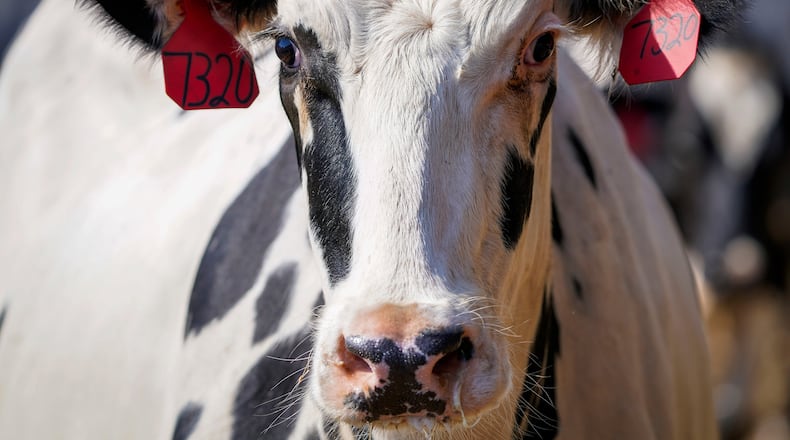The Centers for Disease Control and Prevention officials said Monday they have met with state health leaders in Georgia and around the country, telling them to be prepared for more human cases of bird flu after a dairy worker in Texas was being treated for the virus.
While stating the risk to the public is low, the federal agency is urging state leaders to have “up-to-date operational plans” in place in case more farm workers test positive for the flu. The plans need to include ways to rapidly test and treat farm workers following positive results among cattle herds.
The CDC on Friday issued a health alert asking doctors to test any farm worker who has been exposed to infected birds or other animals. Farm workers should be monitored for signs and symptoms of illness beginning after their first exposure and for 10 days after their last exposure. Those who worked within six feet or less of infected animals should be tested for the virus, even if showing no symptoms, according to the CDC.
The CDC also said state health departments should notify the CDC within 24 hours of identifying a case.
The advisory was in response to news April 1 that a worker dealing with dairy cows in Texas became the first person in the U.S. to catch this version of bird flu — known as highly pathogenic avian influenza (HPAI) — from a mammal, federal health officials said.
The worker in Texas reported eye redness as their only symptom and is recovering, according to the CDC. The person was told to isolate and was treated with an antiviral drug.
So far at least 16 dairy herds in the six states across the country — Idaho, Kansas, Michigan, New Mexico, Texas and Ohio — have tested positive for the flu, according to the U.S. Department of Agriculture.
The HPAI and related strains of the virus have killed hundreds of millions of wild and domestic birds and many wild mammal species around the world in recent years. But this represents the first time the virus has been found in cattle, according to the CDC.
The dairy worker is only the second human case of avian flu in the U.S. In 2022, a poultry farm worker in Colorado tested positive for the virus but recovered. That person reported fatigue for a few days as their only symptom.
Georgia Department of Public Health spokeswoman Nancy Nydam said several employees attended Friday’s meeting with the CDC including epidemiologists, lab workers and a public health veterinarian. She said DPH has a strong partnership with the Georgia Department of Agriculture and “much of the planning for avian influenza already exists.”
“We will work to formalize plans and expand as needed with other areas such as emergency preparedness, GPHL (Georgia Public Health Laboratory), nursing and communications, as appropriate,” she said in an email.
Officials say the virus has not mutated to the extent that it could spread easily between people, but experts worry about the potential for viral evolution.
The CDC said workers with close and prolonged contact with infected animals are at the greatest risk of infection. For those workers, CDC recommends additional precautions outlined in CDC’s “Recommendations for Farmers; Poultry, Backyard Bird Flock, and Livestock Owners; and Worker Protection.”
The vast majority of people infected with bird flu have gotten it directly from birds, but scientists are on guard for any changes that could raise the risk for people. There have been some reports of person-to-person spread within a family in Southeast Asia after one family member caught the virus from poultry.
Federal health and USDA officials released a statement last week emphasizing that there “continues to be no concern” about the safety of the commercial milk supply because milk products are pasteurized before entering the market, adding that agencies continue to monitor the situation. Pasteurization is required for any milk entering interstate commerce for human consumption.
What’s the latest?
— A Texas dairy worker tested positive for highly pathogenic avian influenza (HPAI) or bird flu, becoming only the second case in the U.S. of a human contracting the virus since 2022.
— This is the first time this virus has been found in cows and appears to be the first instance of cow-to-human transmission of bird flu. There is no sign of person-to-person spread of this virus at this time.
— Existing flu antiviral medications such as Tamiflu are effective against the virus.
— The CDC recommends personal protective equipment (PPE) should be worn when farm workers or hobbyists are in direct or close contact (within about six feet) of sick or dead animals including poultry, wild birds, backyard bird flocks, or other animals, animal feces, litter, or materials potentially contaminated with HPAI viruses.
— This is an emerging and rapidly evolving situation that CDC is following closely. At this time, CDC believes that the overall risk to the general public posed by this virus remains low.
Source: Centers for Disease Control and Prevention
About the Author
Keep Reading
The Latest
Featured



